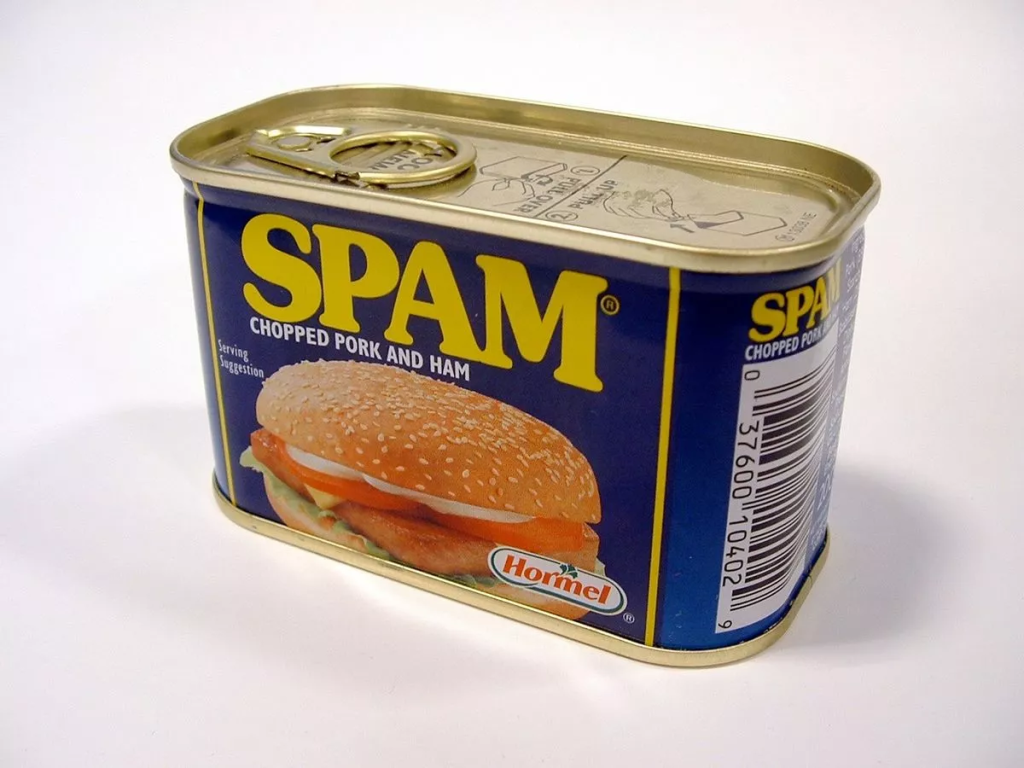Of all the pantry staples that defined generations, few have sparked as much curiosity and debate as SPAM. This legendary canned meat has been a household name for decades, loved by some and questioned by others. Whether you found it at the back of your grandparents’ pantry or sizzling in a frying pan for breakfast, SPAM has remained a cultural phenomenon.
But what exactly is SPAM? Where did it come from? And why does it continue to hold a place in kitchens worldwide? Let’s unravel the mystery behind this iconic meat in a can.
The Origin of SPAM: A War-Time Necessity

SPAM was introduced in 1937 by Hormel Foods Corporation, an American food processing giant. Its rise to fame came during World War II when food rations and supply shortages made fresh meat a luxury. SPAM provided a cheap, convenient, and long-lasting protein source for soldiers and civilians alike.
Due to its easy transport and long shelf life, the U.S. military shipped millions of cans to troops stationed worldwide. SPAM became a staple in war-torn regions, especially in the Pacific, where fresh meat was scarce. Countries like Hawaii, the Philippines, and South Korea adopted it into their cuisine, and to this day, SPAM remains deeply embedded in their food culture.
What Does SPAM Stand For? The Debate Continues
One of the biggest mysteries surrounding SPAM is its name. While it’s widely recognized, what the letters actually stand for has been a source of speculation for decades.
Several theories have circulated, including:
- Specially Processed American Meat
- Shoulder of Pork and Ham
- Salt Preserves Any Meat
- Spiced Ham
According to Time magazine, the name “SPAM” was coined by Ken Daigneau, the brother of a Hormel executive. He reportedly came up with the name during a company naming contest and won a $100 prize—quite a sum in the late 1930s.
Interestingly, Hormel Foods has never confirmed a single meaning, preferring to keep the mystery alive. Company founder Jay Hormel once told The New Yorker in 1945, “I knew then and there that the name was perfect.” And so, the enigma remains.
What’s Really Inside a Can of SPAM?
For years, people have joked about SPAM’s mystery ingredients, but the truth is much simpler than the rumors suggest. Despite its reputation for being a mystery meat, SPAM contains only six ingredients:
- Pork
- Water
- Salt
- Potato starch
- Sugar
- Sodium nitrate
That’s it—no secret fillers, no exotic additives. The pork used in SPAM is a combination of shoulder meat and ham, which gives it its distinct texture and flavor.
The Hormel Foods website states that SPAM was created to fill a need for inexpensive meat during the Great Depression, but its popularity grew beyond mere necessity. Today, millions of cans are sold each year across the world.
How Is SPAM Made?
While the contents of SPAM are straightforward, its production process is just as simple.
- Grinding the Meat – Pork shoulder and ham are ground together to form the base of SPAM.
- Mixing the Ingredients – The pork mixture is blended with water, salt, sugar, potato starch, and sodium nitrate for about 20 minutes.
- Canning – The meat mixture is packed into cans, which are vacuum-sealed to preserve freshness.
- Cooking & Cooling – The sealed cans are cooked for several hours, then cooled to solidify the texture.
- Labeling & Distribution – Once cooled, the cans receive their iconic blue and yellow SPAM labels and are shipped worldwide.
This simple yet effective process has remained largely unchanged for over 85 years.
SPAM’s Cultural Impact: From War Rations to Global Delicacy

SPAM’s role in global food culture is undeniable. What started as a war-time necessity has become a beloved ingredient in many countries.
Hawaii: The SPAM Capital of the World
Hawaii consumes more SPAM per capita than anywhere else in the world. Introduced to the islands during World War II, it became a household favorite and has since become a key ingredient in local cuisine. The famous Spam Musubi—a sushi-like dish featuring grilled SPAM on top of rice wrapped in seaweed—is a must-try Hawaiian delicacy.
Hawaiians love SPAM so much that they host an annual festival called SPAM JAM, where restaurants create unique SPAM-inspired dishes ranging from SPAM burgers to SPAM-infused desserts.
South Korea: A Gourmet Treat
SPAM became a part of South Korean cuisine during the Korean War when American soldiers introduced it to the locals. Since then, it has evolved from a survival food to a luxury gift. In South Korea, high-end SPAM gift sets are often exchanged during holidays and special occasions.
SPAM is commonly used in Budae Jjigae (Army Stew), a spicy Korean hotpot dish that mixes SPAM with ramen, tofu, kimchi, and other ingredients.
The Philippines: A Breakfast Staple
In the Philippines, SPAM is a breakfast favorite, often served with garlic fried rice and eggs, known locally as SPAMsilog. The Filipinos have embraced SPAM so much that fast-food chains like Jollibee offer SPAM-based meals.
Why Does SPAM Have Such a Divisive Reputation?

Despite its global popularity, SPAM remains one of the most polarizing foods. People either love it or loathe it—there seems to be no in-between. But why?
The Texture & Appearance
SPAM’s soft, jelly-coated texture can be off-putting for some. Straight out of the can, it has a distinctive shape and a gelatin layer formed from its natural juices. However, once fried, grilled, or baked, it takes on a crispy, flavorful exterior that wins over even the biggest skeptics.
The “Mystery Meat” Stigma
Years of jokes and urban legends have led people to believe SPAM is packed with questionable ingredients. In reality, its simple recipe consists of just pork, water, salt, sugar, potato starch, and sodium nitrate.
Canned Food Bias
In an age where fresh and organic foods are prioritized, canned meat has lost some of its appeal. Many associate it with being overly processed, even though its production is relatively straightforward.
The Future of SPAM: Still Going Strong

Despite changing food trends, SPAM continues to thrive. Hormel has introduced various flavors to appeal to modern consumers, including:
- SPAM Teriyaki
- SPAM Jalapeño
- SPAM Hickory Smoke
- SPAM Tocino (a Filipino-inspired sweetened pork flavor)
With creative recipes surfacing on social media and SPAM festivals celebrating its legacy, this canned meat isn’t going anywhere anytime soon.
Conclusion: SPAM’s Legacy Lives On
SPAM is more than just a canned meat product—it’s a cultural icon. From its humble beginnings during the Great Depression to becoming a beloved dish in countries around the world, SPAM has stood the test of time.
While it may never win over everyone, those who love it can’t get enough. Whether you enjoy it fried, grilled, or straight from the can, SPAM remains one of the most unique and enduring foods in history.
So next time you see a can of SPAM on the shelf, consider giving it a try. Who knows? You might just become a fan of this legendary canned meat.


